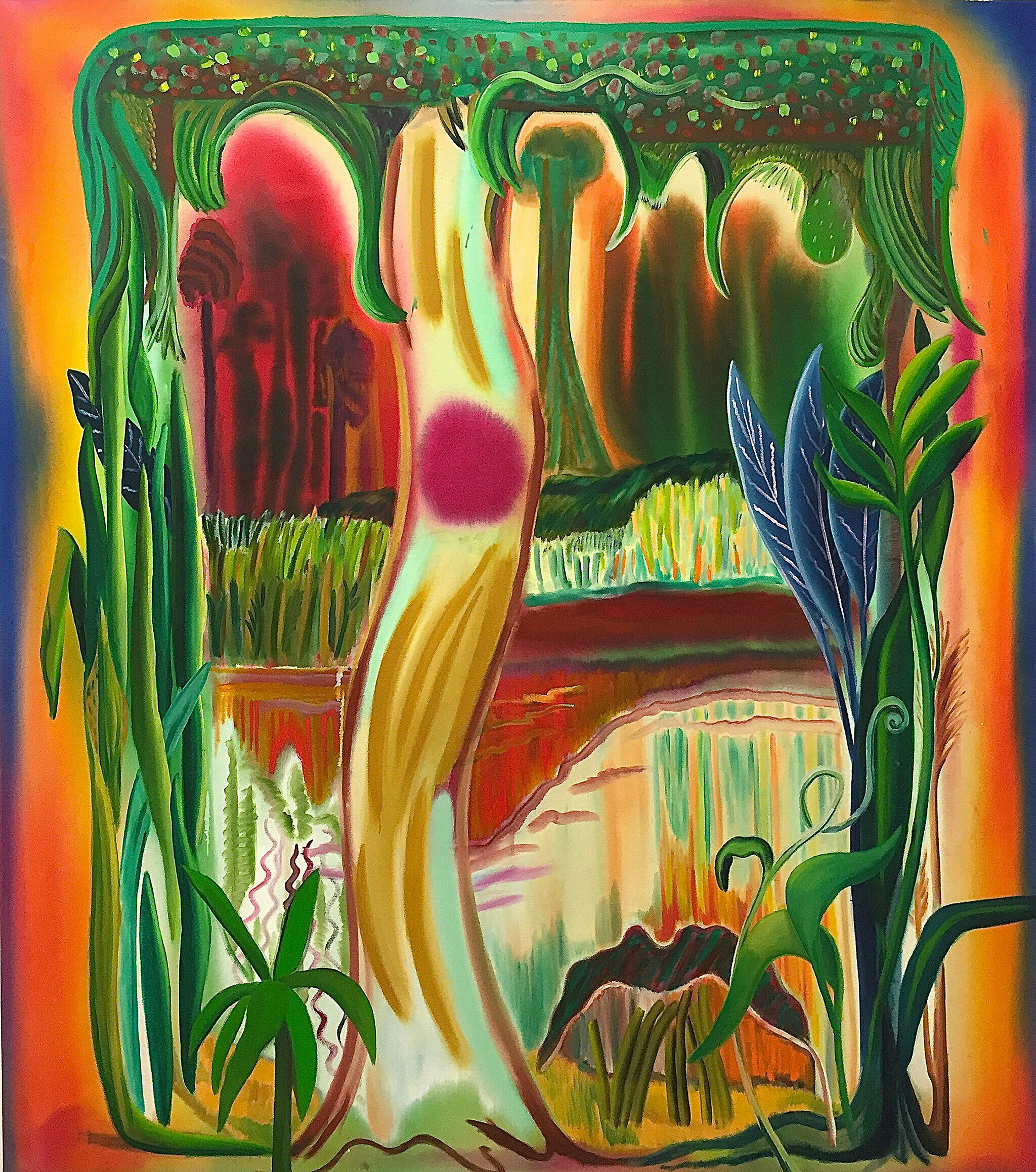Frame it
Use a viewfinder to make a drawing
In her paintings, Shara Hughes includes various framing devices to give the viewer a sense that s/he is looking at the image from a specific vantage point. Framing describes the boundary around an image and the way that the image is cropped, calling attention to what is and is not included in the image. Framing reveals the artist’s decisions about how an image is constructed and the meaning the artist wants to convey.
a. A viewfinder is a useful device for framing a composition. It allows you to crop and frame a scene within a specific area. You can look through a viewfinder and move it around to find the most engaging composition. Ask your students to create a viewfinder out of card stock to use as a framing device. Students can make a viewfinder by cutting or tearing paper. A traditional viewfinder has a rectangular opening, but encourage your students to experiment with creating an interesting shape for their viewfinders. Fold the card in half. Draw a shape in the center of the card and cut or tear out the shape. Leave a border all the way around the edges of the card. Older students could use an object they find in the classroom as a viewfinder. For example, the handle of a pair of scissors or the view through the opening of a stapler.
b. Ask students to frame a scene in their classroom with their viewfinder and draw what they see through it. Have them use the shape of their viewfinder as a “frame” for their drawing. Have students make three changes to the scene so that it becomes more surprising. Have them use crayons, colored pencils, or markers to add color to their scene.
c. View and discuss students’ drawings. How does the framing change their experience of looking? What changes did they make to the scene so that it became more surprising?
d. Older students could discuss composition and why an artist might use an actual frame on a painting.

